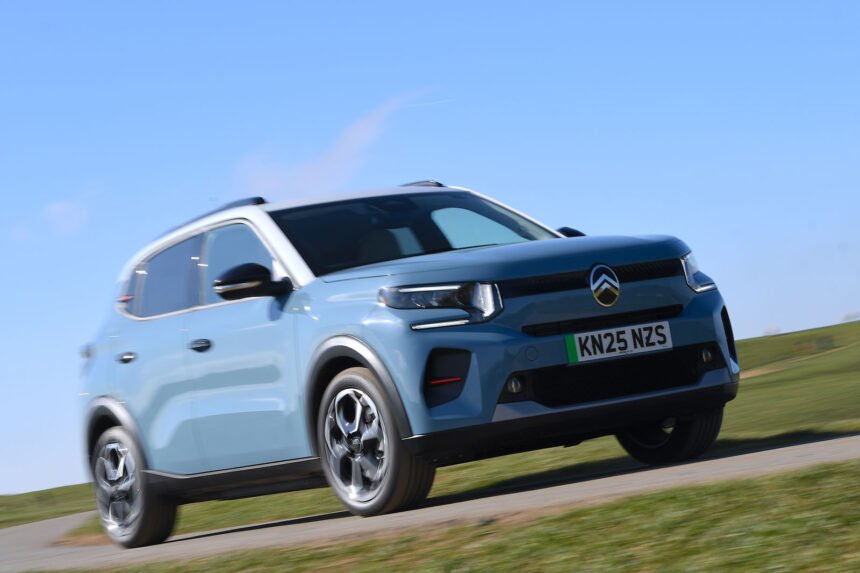The decision to increase the height of the C3 by five inches serves a practical purpose, as it allows Citroën to accommodate an underfloor battery pack without compromising cabin space. This results in a more spacious interior for the ë-C3, providing ample headroom in the front row and comfortable seating for most adults in the second row.
Front-row headroom measures at 1010mm, which is 20mm more than the Toyota Yaris, while second-row legroom is at 660mm (compared to 630mm in the Toyota Yaris and 640mm in the Nissan Micra). Although the seat cushions lack some inclination angle, the front seats are well-padded and adjustable, offering a comfortable driving experience.
The driving position of the ë-C3 is reminiscent of Peugeot’s i-Cockpit design, with a small steering wheel and low-sprouting column. The all-digital instrumentation pod is positioned high on the fascia, providing easy visibility for the driver. The layout of the controls is user-friendly, with ample storage space on the dashboard for personal items and colorful decorations.
In terms of multimedia features, the ë-C3 offers physical controls for heating, ventilation, mirror adjustment, and ADAS functions. The 10.3-inch touchscreen infotainment system, while simple and easy to use, lacks certain functionalities such as a trip computer and options to adjust traction or stability controls. However, wireless smartphone mirroring is standard on both Plus and Max models, making it convenient for drivers to connect their devices.
Overall, the ë-C3 provides a comfortable and spacious driving experience, with a focus on simplicity and usability in its design. The multimedia system may have some limitations, but its straightforward interface ensures minimal distraction for the driver. With its practical features and ample interior space, the ë-C3 is a compelling option in the supermini segment.







